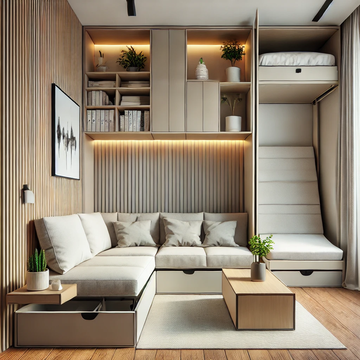Why Drone Photography Is a Game-Changer
Have you ever looked at stunning aerial photos and thought, “I wish I could capture something like that”? Well, with drone photography, you can. There's something magical about seeing the world from above; it’s like discovering a whole new perspective. Whether you’re a hobbyist wanting to up your Instagram game or a budding professional photographer, drones offer a way to capture unique and breathtaking shots.
But where do you start? Don’t worry, we’re here to guide you through the essentials of drone photography. From picking out the perfect drone to mastering those aerial shots, we’ve got you covered.
Step 1: Choosing the Right Drone
First things first, you need to select a drone that fits your needs. If you’re new to this, it can be overwhelming with all the options out there. Here’s a simple breakdown to make your choice easier:
Camera Quality: Look for drones with a good camera resolution. A decent-quality camera will make a big difference in the sharpness and clarity of your photos. Drones with 4K cameras are a popular choice for beginners.
Battery Life: Nobody wants their drone to run out of juice halfway through a shoot. Check the drone’s battery life and consider getting a few extras if you plan on flying for extended periods.
Ease of Use: Some drones come with beginner-friendly features like automatic takeoff and landing, and even obstacle avoidance. These features can make your flying experience much smoother.
Popular Models for Beginners: The DJI Mini 2 or the DJI Mavic Air 2 are excellent choices for those just starting out. They’re user-friendly, portable, and offer great camera quality.
Step 2: Understanding Drone Regulations
Before you take to the skies, it’s crucial to understand the regulations governing drone use. This might sound a bit dull, but trust me, it’s important.
Local Regulations: Different areas have different rules. Make sure you’re aware of the no-fly zones, height restrictions, and any other local laws. For instance, flying near airports or crowded areas is generally prohibited.
Registration and Permits: In some countries, you may need to register your drone or obtain a permit, especially if you’re planning to use it for commercial purposes. Checking the official guidelines will save you from potential fines or legal issues.
Step 3: Essential Drone Photography Equipment
Let’s talk gear. While your drone will come with some essentials, there are a few additional items you might want to consider:
Extra Batteries: These are a lifesaver for long shoots. Nothing puts a damper on your plans faster than a low battery warning.
Propeller Guards: These can protect your drone’s propellers from damage, which is particularly useful when flying in tight spaces.
Carrying Case: A sturdy case will keep your drone safe and make transporting it much easier.
Camera Settings: Familiarise yourself with your drone’s camera settings. Adjusting things like exposure and white balance can significantly enhance your photos.
Step 4: Planning Your Aerial Shots
Planning is key to getting great aerial shots. Here’s how you can get the best out of your drone:
Scouting Locations: Find locations that offer interesting views and compositions. Whether it’s a sweeping landscape or a bustling cityscape, having a variety of subjects will make your portfolio stand out.
Weather Considerations: The weather plays a big role in drone photography. Calm, clear days are ideal. Strong winds or heavy rain can affect your drone’s stability and damage your equipment.
Shot List and Storyboard: Before you start flying, plan out what you want to capture. Having a shot list or storyboard can help you stay focused and ensure you don’t miss any important angles.
Step 5: Mastering Drone Controls and Techniques
Flying a drone takes a bit of practice. Here’s how you can get the hang of it:
Basic Flight Controls: Learn the basic controls for takeoff, landing, and manoeuvring. Practice in an open area to get comfortable with flying.
Capturing Stable Footage: Smooth movements are key to great aerial shots. Try to avoid sudden jerks or fast movements. Gentle adjustments to the controls will yield better results.
Step 6: Editing Your Drone Photos and Videos
Once you’ve got your footage, it’s time to make it shine:
Editing Software: Software like Adobe Lightroom for photos and Final Cut Pro for videos can help you enhance your shots. Adjust things like brightness, contrast, and colour balance to make your images pop.
Basic Tips: Don’t go overboard with editing. The goal is to enhance, not completely transform your shots. Subtle adjustments often yield the best results.
Step 7: Overcoming Common Challenges
Drone photography isn’t without its hurdles. Here’s how to tackle some common issues:
Weather Problems: If the weather isn’t ideal, consider postponing your shoot. It’s better to wait for clear skies than to risk damaging your drone or getting poor-quality footage.
Battery Life: Keep an eye on your battery levels and plan your flights accordingly. Having extra batteries on hand can prevent interruptions.
Signal Issues: Interference can sometimes affect your drone’s signal. Fly in open areas with minimal electronic interference for the best results.
Step 8: Sharing and Showcasing Your Work
You’ve got fantastic shots—now what?
Platforms for Sharing: Social media platforms like Instagram and Facebook are great for showcasing your work. You can also create a portfolio on photography websites or even start a blog.
Building a Portfolio: A well-organised portfolio will help you attract clients and showcase your skills. Make sure to include a variety of shots to demonstrate your range.
Ready to Take to the Skies?
Drone photography offers an incredible way to capture the world from a new perspective. Whether you’re snapping photos for fun or looking to make a career out of it, starting with the right gear and knowledge will set you up for success. So, grab your drone, plan your shots, and get ready to capture some amazing aerial views. Happy flying!




